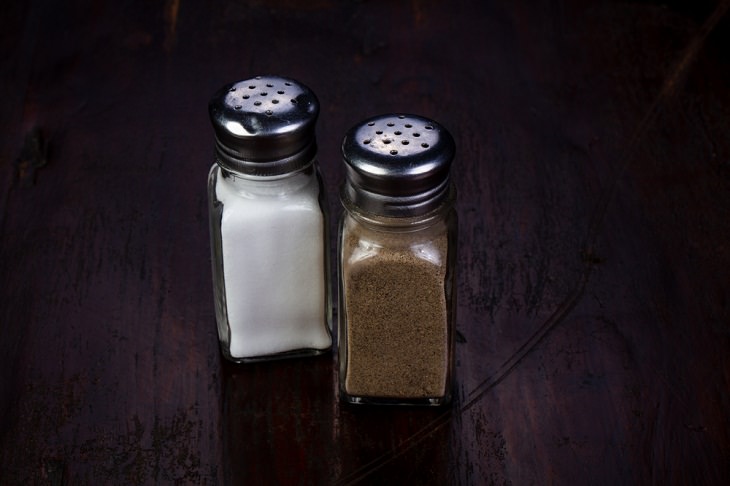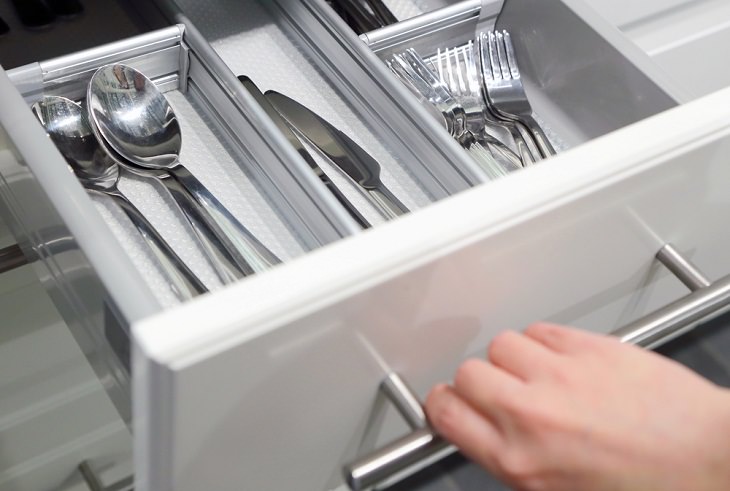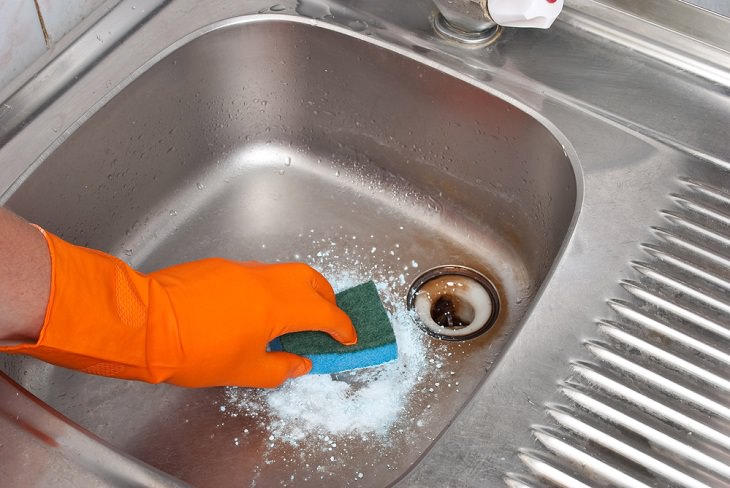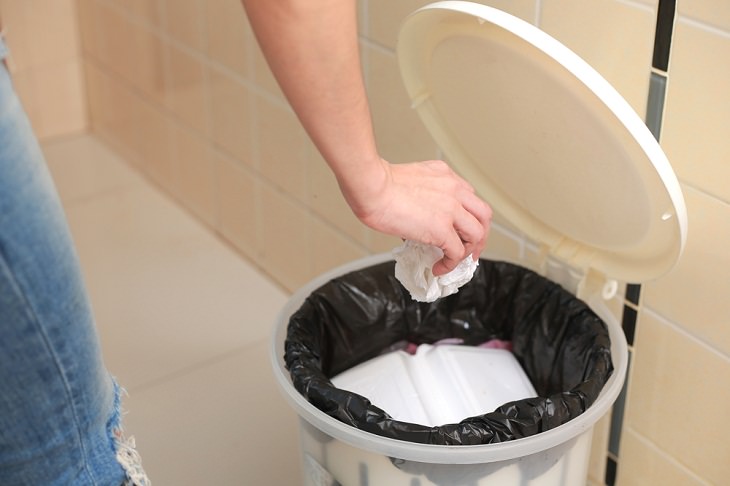We use them multiple times a day, but when was the last time you cleaned the salt and pepper shakers? In big families, especially, salt and pepper shakers are retrieved from the spice rack multiple times every day. Now think about how easy it is to pass on germs through these bottles if someone forgets to wash their hands before touching them.
How to clean: Give the salt and pepper shaker bottles a thorough cleanse with a disinfectant wipe after every meal. Also, wash the salt and pepper shakers after emptying their contents once a week.
2. Handles and Knobs
Handles and knobs of kitchen appliances, drawers, and cabinets collect a lot of germs throughout the day. They are bound to be touched many times a day, and it's too easy for germs to jump from your hands to these surfaces and vice versa. Cooking is especially dangerous - you will be touching the handles of your fridge and the knobs of your kitchen drawer many times. Since you are likely touching them without washing your hands and handling unwashed produce at the same time, you could be spreading germs like Listeria, E. coli, Salmonella, mold, and yeast all over the kitchen. All of these germs can cause digestive upset and other health issues.
How to clean: Ideally, you should sanitize kitchen cabinet handles, appliance handles, and knobs with a kitchen disinfectant spray or a disinfectant wipe after every meal preparation.
3. The Sink
The sink is the place where you clean everything you use in your kitchen: from washing meat and vegetables to cleaning dirty dishes and your hands. Hence, it's easy to see why the sink could become a breeding ground for germs. Some people do the dishes every night, but they tend to forget to clean the sink. This is a serious mistake, but it also explains why the sink is usually one of the dirtiest places in a home.
If you don't wash the sink enough, bacteria and other microorganisms will start growing and breeding there. According to the National Sanitation Foundation International (NSF), 45% of all home sinks they tested were contaminated with E. coli or another type of bacteria causing digestive upset. Thus, it's essential to disinfect the kitchen sink immediately after use. Doing this regularly will reduce the risk of contaminating foods and dishes.
How to clean: A good quality disinfectant should be able to get rid of most of the bacteria and other microbes from the faucet, the strainer, the bottom, and the sides of the sink. You can also use a baking soda and vinegar solution to keep drains clear.
4. Chopping Board
A lot of us tend to use the same cutting or chopping board to prepare both produce and raw meat on a day-to-day basis. After using them, we generally just wipe them down and use them again later. However, these chopping boards, especially the wooden ones, can hold many kinds of bacteria in their nooks and crannies. Ideally, you should be using two separate cutting boards: one for cutting meat and the other for chopping fruits and veggies. This will lessen cross-contamination while you are preparing meals.
How to clean: After every use, make sure you wash your chopping board with hot, soapy water. Rinse it with hot water next and dry with a clean dishtowel. Experts also recommend replacing your cutting boards every 12 months.
5. Refrigerator
We use the fridge to keep food fresh, but how many times do you actually take everything out of your fridge and clean it? Most of us won’t even remember the last time we scrubbed the insides of the refrigerator, so it is probably teeming with bacteria. This is because your fridge holds food that hasn’t been cleaned yet. Spills and leaky packaging can be missed, which leads to bacterial growth. Produce drawers and condiment shelves are particularly vulnerable, as they are often ignored while cleaning and can harbor mold, which can easily travel to other areas of the fridge and spoil food.
How to clean: Experts recommend cleaning the interior of the fridge monthly. Remove the drawers and shelves, and wash them with a mild detergent in hot water. Dry with a clean cloth.
Use a disinfectant spray to wipe away any spills from the walls of the refrigerator and freezer. Also, clean and sanitize the ice maker and ice bin with the same spray. Leave them to dry for a few minutes before putting them back inside.
6. Dish Towels
We use kitchen towels and rags on a daily basis to clean up spills and surfaces, dry our hands, and even hold hot dishes. We also use the same towel to dry dishes. However, according to a study, these towels can carry bacteria that could lead to foodborne illness. When the same cloth is being exposed to various surfaces, it can easily spread these germs to all the areas it touches.
How to clean: Researchers recommend using specific towels for specific purposes. For example, keep one towel for drying your hands and another one for wiping down surfaces or drying dishes. Wash the towels every day with hot water and detergent. You can also soak them in a bucket of warm water and vinegar for about 15 minutes. Dry them well to make sure all the germs are eradicated.
7. The Blender Gasket
Do you make it a point to efficiently clean the blender after using it? You should. There is a rubber seal installed at the base of the blender jar to help prevent leaks. It's called the gasket. This part of the blender is often teeming with germs. According to an NSF International Household Germ study, 36 percent of these gaskets contain traces of salmonella and 43 percent of them harbor yeast or mold. Moreover, repeated use and washing leaves behind moisture and little particles of food stuck in the gasket. This eventually leads to germ build-up.
How to clean: When you wash your blender after every use, take it apart completely, including the gasket, and wash each item in hot soapy water. You can also soak the gasket in water and vinegar to ensure it's thoroughly sanitized. Wipe the gasket and the other parts of the blender with a clean dry cloth.
8. Garbage Can
We don’t need to explain why the garbage can in your kitchen is a hotbed for germs. It is easily the filthiest item in your kitchen and perhaps the dirtiest area of your home. And while you likely discard the trash from the can frequently, how often do you actually clean the basket, too? Remember that you put all kinds of food waste and other trash in the garbage can many times a day, and these items are leaving behind huge amounts of germs.
If you are just taking out the trash and not cleaning the can itself for a long time, the basket and the area around it will start smelling bad.
How to clean: Clean the trashcan thoroughly on a regular basis. First, rinse the can properly with water. Then, use any disinfectant spray or all-purpose cleaner to spray down the inside and outside of the garbage can. Don’t forget to also disinfect the can’s lid. You can also take about half a cup of baking soda and sprinkle it inside your can, to ensure it smells fresh after the wash.
Alternatively, you can give the trash can a thorough scrub using a microfiber cloth and any mild detergent and water. Once you are done scrubbing it, rinse it water and leave it to dry for a few minutes. If the garbage can is stored under your kitchen cabinet, remember to disinfect that area, too.
Share this article with your friends and family!








